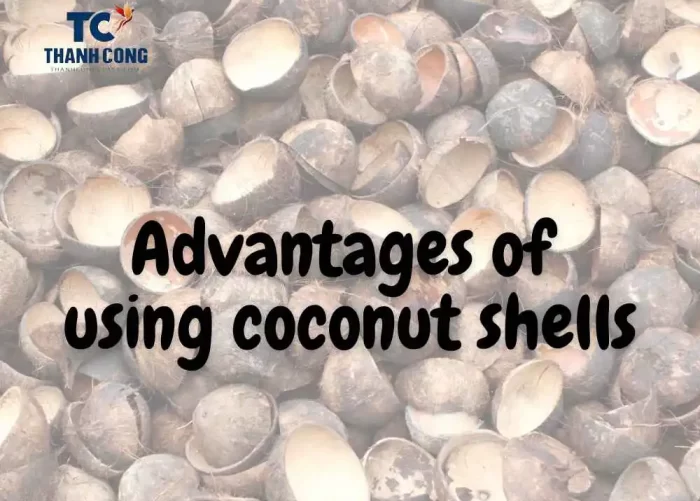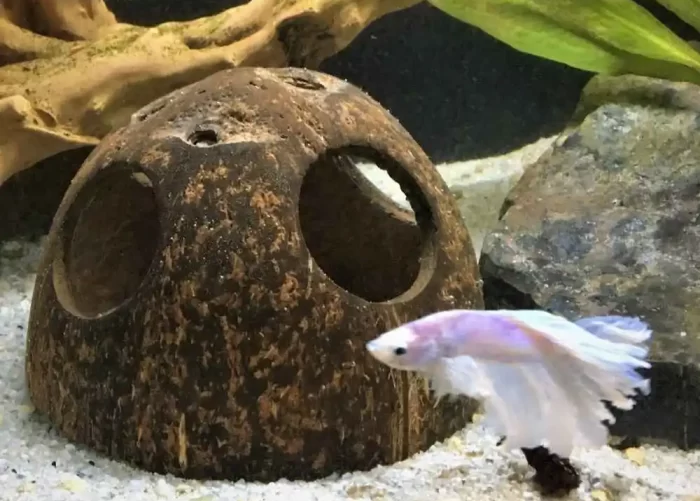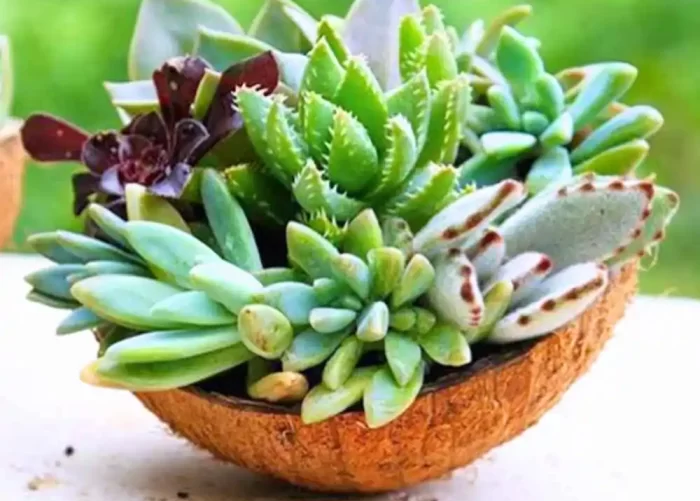The coconut shell, the hard outer layer of a coconut, is often discarded as waste after the edible portion of the fruit has been consumed. However, this natural material has many often overlooked uses and benefits. Using coconut shell is a sustainable and cost-effective way to create various products, from activated carbon to home decor and fuel for cooking. With its durability and renewable properties, coconut shell has the potential to be a valuable resource in various industries.
Contents [hide]
1. Advantages of Using Coconut Shells
Using coconut shells as a natural resource offers several advantages over other materials. Here are some of the most significant benefits of coconut shell:
- Sustainability: Coconut shell is a renewable resource readily available in many parts of the world. It is also biodegradable and can be recycled, making it an environmentally friendly material.
- Cost-effectiveness: Coconut shell is affordable and low-cost compared to natural resources such as wood or metal. It can be sourced locally, reducing transportation costs.
- Durability: The shell is a hard and durable material that can withstand wear and tear. This makes it an ideal material for creating products that require strength and longevity.
- Renewable resource: Coconut shell is a byproduct of the coconut industry, and using it can help reduce waste and maximize the use of coconut fruit.
- Versatility: You can use them in various applications, including activated carbon production, home decor, fuel for cooking, and animal feed supplement. This versatility makes it a valuable resource in different industries.
In summary, sing coconut shells as a natural resource offers several advantages, including sustainability, cost-effectiveness, durability, versatility, and its status as a renewable resource.

2. Various Uses of Coconut Shell
Here are some methods of using coconut shell that you can apply to your home.
2.1 Using Coconut Shell Craft
Coconut shell is a versatile and sustainable material that can create beautiful and unique handicrafts. Coconut shell is a versatile and sustainable material that can create various handicrafts. Its natural color and texture make it a unique and beautiful addition to any craft project.
Here are some of the ideas that coconut shell is used in crafting:
- Jewelry: Coconut shells can be carved, polished, and shaped into jewelry such as earrings, bracelets, and necklaces. The natural color and texture of the material add a unique and rustic charm to the pieces.
- Home decor: Coconut shells can make various home decor items, such as bowls, coasters, and candle holders. These diy items add a natural and tropical touch to any room. (Check out: Coconut bowls candles)
- Figurines and ornaments: Coconut shells can be carved into figurines and ornaments such as animals, flowers, and other decorative designs. These pieces make great souvenirs and gifts.
- Musical instruments: Coconut shells can be used to create musical instruments such as maracas and percussion shakers. The natural sound produced by the shell adds an organic and earthy element to the music.
- Accessories: Coconut shells can create accessories like buttons, buckles, and hair clips. These items are eco-friendly and add a unique touch to clothing and accessories.

2.2 Using Coconut Shell As A Bowl
To make a coconut bowl, you must prepare tools such as saws, sandpaper, cleaning supplies and can use lacquer to polish it.
Using coconut shell bowls instead of disposable plastic or paper bowls helps reduce waste and is more environmentally friendly. They are made from natural materials and do not contain any harmful chemicals or toxins that can leach into food.
Coconut shell also contains lauric acid, which has natural antibacterial properties. This makes them resistant to bacteria and mold growth, providing a more hygienic and safe serving option.
Check out our Coconut Bowls

2.3 Using Coconut Shell in Aquarium
Coconut shell is a popular and natural material used in aquariums as a decoration and a functional accessory. Here are some of how coconut shells can be used in an aquarium:
- Hiding place for fish: Coconut shells can be used as a hiding place for small fish or shrimp, providing a natural shelter and a sense of security.
- Breeding area for fish: Coconut shells can also be used as a breeding area for certain fish species or invertebrates, providing a safe and natural environment for eggs and young.
- Decoration: Coconut shells have a unique and natural appearance that adds an interesting and attractive element to an aquarium. They can be used as decoration, standalone pieces, or as part of a larger display.
- Bio-filter: Coconut shells can be used as a bio-filter in an aquarium. The porous structure of the shell provides a surface area for beneficial bacteria to colonize, helping to maintain a healthy and balanced ecosystem.
- Substrate: Coconut shells can be ground up and used as a substrate in an aquarium. This can create a natural-looking environment and allow beneficial bacteria to grow.
When using coconut shells in an aquarium, it is important to properly clean and prepare them before use to remove any debris or contaminants. It is also important to monitor water parameters to ensure that the coconut shell is not negatively affecting water chemistry or causing any issues in the aquarium.

2.4 Feeder for Small Animals
Coconut shells can be a natural and eco-friendly feeder for small animals such as birds, hamsters, and squirrels. Coconut shells are relatively durable and can withstand the wear and tear of outdoor use, making them a long-lasting option for feeding animals.
To use a coconut shell as a feeder for small animals, drill or cut a hole in the shell and fill it with the appropriate food, such as seeds or nuts. The coconut shell can then be hung or placed in a suitable location for the target animal to access. However, it’s important to regularly clean the coconut shell feeder to prevent the buildup of bacteria or mold.
2.5 Fuel for Cooking And Heating
Using coconut shells as a fuel source is a sustainable and eco-friendly option that provides various benefits for cooking and heating.
To use coconut shells as a fuel source, they must first be properly prepared by removing any residual meat or fibers and drying them out. Once dried, the shells can be burned directly on a stove, grill, or other heating appliance. Alternatively, the shells can be ground into small pieces or converted into charcoal for more specialized heating applications.
2.6 Coconut Shell Uses for Plants
Coconut shells can be used in various ways to benefit plants and promote healthy growth. Here are some of how coconut shells can be used for plants:
- Soil amendment: Ground-up coconut shells can be added to soil as an organic amendment to improve soil structure and water retention while providing essential minerals and nutrients.
- Potting medium: Coconut coir, the fibrous material found between the outer shell and the coconut meat, can be used as a potting medium for plants, providing a lightweight and moisture-retentive substrate.
- Mulch: Coconut husks can be used as mulch to help regulate soil temperature, prevent moisture loss, and suppress weed growth.
- Compost: Coconut shells can be added to compost piles to provide carbon-rich materials, which can help balance the nutrient content of the compost and promote healthy decomposition.
- Planter: Coconut shells can be used as planters, with a hole drilled into the bottom for drainage, providing a unique and natural alternative to traditional planters.
Coconut shells are a sustainable and eco-friendly option for gardening and can provide a range of benefits for plant growth and health.

The above article is about the “using coconut shell” that you can apply to your work. If you have other ways to use coconut shells, don’t hesitate to send us an email at info@thanhcongcraft.com or leave us a message at WhatsApp: +84967485411.


